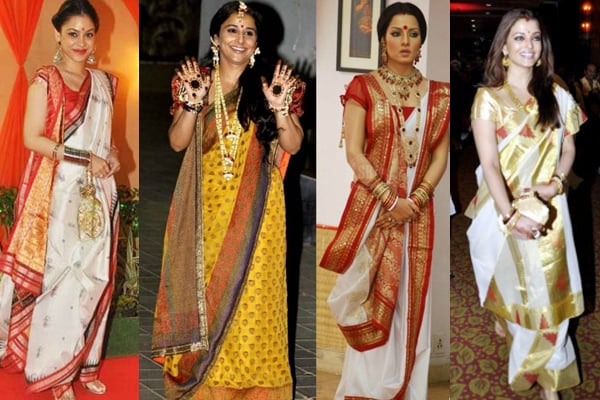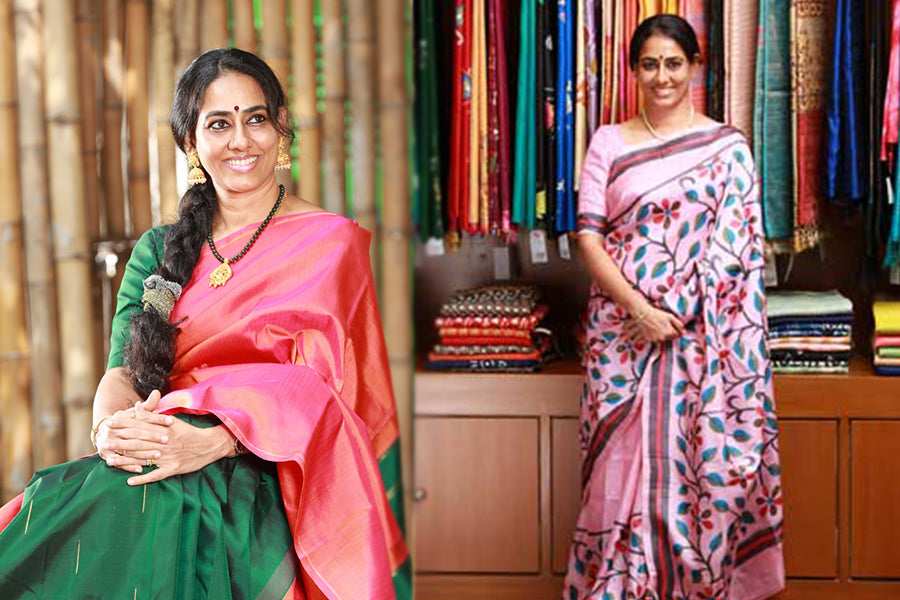Like the famous adage “Beauty lies in the eyes of the beholder” only an art lover can feel the beauty that is contained in a hand painted pen Kalamkari saree. It is a totally exquisite combination of grace and elegance that is formed on the fabric in the form of meaningful paintings. The fact that all these paintings have been made with a pen which are made by the artists themselves and natural dyes have served as the painting colors make it a totally exceptional form of attire.
Intrigued by the multifarious designs and patterns that reflect rich culture and tradition, it is delightful to read along the process of making pen kalamkari painting (Srikalahasti Kalamkari Process) on fabrics. While the designs look very neat and clean, it is evident in itself that the preparation of each kalamkari fabric undergoes a long process. There are minute variations here and there and that only reflects the creativity of the artist.
Preparation of Fabric
Not every fabric is capable of retaining the pen painting on itself. The colors do not stay on the synthetic fabrics that well. Hence handlooms especially cotton and silks are most preferred for a kalamkari painting. The fabric needs to be treated to de-starch it first and then it is washed with a mixture of ground myrobalan and milk. This is done to make the fabric ready for painting and subsequently to absorb the natural colouring. It is then dried in the sun and brushed to remove the extra particles on the fabric. The fabric base is now ready to retain the natural colors permanently.
Preparation of Organic Colours

The second step in the process is the preparation of the organic colors. Red, Black, Blue, and Yellow are the most used colors in pen painting (Kalamkari). All these are prepared from natural ingredients. The black color is obtained from the fermentation of jaggery and iron rust while red color is prepared from alum and chevvalli ver/manjistha. Indigo plant is utilized to obtain blue color while turmeric solution is used for yellow color. The base is usually light in color and other colors like green or violet can be easily formed by mixing any two organic colors.
Setting the Fabric on the Frame

The fabric is mounted on an adjustable frame or on another piece of plain fabric in order to begin the painting process. The fabric is locked with wooden blocks and the pattern for the painting is hand drawn with the help of the special pen made by the artist. The patterns usually running designs spread all over the fabric, but the details vary depending on the artist’s imagination and creativity.
Making of the Special Pen

The kalamkari pen is originally prepared from a wooden bamboo stick with a sharpened end resembling a pen tip. It is covered with a cotton ball or thread tied at the sharpened end to facilitate neat painting. The cotton winding absorbs the dye and is subjected to varying the pressure by the nimble fingers of the artist to facilitate required discharge of colour.
Filling Colours with the Pen
After the outlining is complete and dried, the colour filling process starts. The fabric is subjected to treatment with a fixing agent after each color coating is done. The coatings begin with black and are followed by red, yellow and blue respectively. In between each coating, the fabric is washed, sun dried and brushed to remove traces of extra dye. The entire process comprises of several steps of washing, painting and drying before the entire pen painting master piece is ready.
Washing the Painted Fabric
The finally painted fabric, after the fixation of all colors, is washed in flowing water and dried in the sun. This is done in order to remove impurities and particles from the fabric. It is then ironed to make it look perfect.
Designs used
The motifs seen today are mostly related to nature, birds animals and leaves interlacing
through the width of the fabric. ‘Tree of Life’ and peacocks are most common. The most
recent trend is that of wearing mythological figures like radha Krishna, dancing ladies on dupattas and sarees.
The Hard Work Involved in Pen Painting
It is already highlighted that pen painting is a time taking process. But after going through the steps that are involved in pen painting, it is also clear that a lot of hard work and creative skills is put into this art. It requires a lot of patience and dedication to prepare the Kalamkari art hand work.


In fact, the complexity of the pattern and color combinations determine the time that will be taken to finish a pen painting work. Also, the sizing of the fabric is a determining factor. It implies that a saree might take several days to complete while a blouse fabric might be ready in just a week.
So, the next time you buy Kalamkari sarees online, you know how much efforts are put into it and that it is one of the many art forms that India is proud of.
Make sure to buy kalamkari sarees online from a genuine place.



